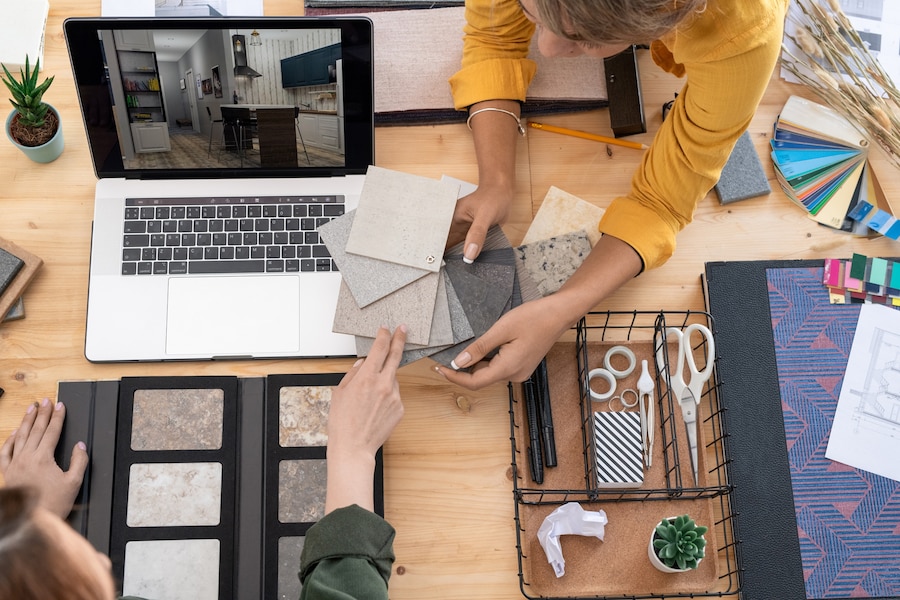Are you someone who loves interior design but doesn’t have a degree in it? Don’t worry, you can still start an interior design business and make it successful without a formal qualification. In this topic, we’ll guide you through the process of becoming a successful interior designer, even if you don’t have a degree. Starting a business without a degree may seem daunting, but the world of interior design is one where creativity and talent often speak louder than a diploma. Let’s dive into the exciting world of interior design and explore how you can embark on this journey without formal credentials.
What Is Interior Design, anyway?
Interior design is the art of enhancing the interior of spaces to create a harmonious and aesthetically pleasing environment. It’s all about blending functionality, aesthetics, and a personal touch to transform a room into something extraordinary. And the best part? You can do it, too, even without that piece of paper.
Can You Start an Interior Design Business Without a Degree?

Absolutely! There’s no denying that formal education can provide valuable insights and techniques, but it’s important to remember that it’s not the only path to success in this field. What’s equally important is your passion, creativity, and willingness to learn. These attributes can take you a long way in achieving your goals. With a strong drive to succeed and a commitment to learn, you can master the skills and knowledge required to excel in your chosen field. So, let’s start and embark on a journey of growth and discovery together.
How to Start an Interior Design Business Without a Degree?
So, you’re ready to roll up your sleeves and dive into the world of interior design. Here’s a step-by-step guide on kickstarting your interior design business without a degree.
Find Your Niche
Interior design is an expansive realm encompassing many styles and settings. Your first step should be identifying your niche. What do you excel at? Do you have an innate talent for creating cozy, inviting living spaces that make people feel at home? Or you may have a flair for designing sleek, modern office spaces that inspire productivity. Your niche is your unique selling point, the specialty that sets you apart from the crowd. Consider your strengths and interests to carve out a niche that resonates with your passion and aligns with your target clientele.
Build Your Portfolio
Your portfolio is your golden ticket into the world of interior design. It’s your visual resume showcasing your skills, style, and the transformative power of your creativity. Starting small is often the best approach. Begin by offering your interior design services to friends and family. This will allow you to hone your skills and provide you with opportunities to take before-and-after photographs. These photos will become the core of your portfolio. Your portfolio and credibility in the field will grow as you accumulate more projects. Remember, a picture is truly worth a thousand words in interior design.
Learn the Basics
While a formal degree in interior design can be advantageous, it’s not the only path to success. Thankfully, abundant resources are available to help you grasp the basics. Online courses, workshops, and books can provide essential knowledge about color theory, spatial arrangements, and design principles. You’ll learn the art of harmonizing aesthetics and functionality, creating spaces that breathe life into a room. Pro tip: Explore renowned websites like ours for inspiration and expert insights. They offer a treasure trove of design ideas and industry trends.
Do Networking
Building a network is pivotal in the interior design industry. The bridge connects you with potential clients, fellow designers, and industry professionals. Attend local design events like trade shows, exhibitions, or design fairs. These events are fertile grounds for making meaningful connections. Join online forums and communities dedicated to interior design. Engage in discussions, seek advice, and share your experiences. Networking isn’t just about finding clients; it’s also about staying updated on the latest design trends, materials, and technologies. Your network can be a valuable source of support, referrals, and inspiration throughout your interior design journey.
Stay Updated with Trends

Interior design is a dynamic and ever-evolving field. You must stay current with the latest trends, color palettes, and materials to excel. They offer a treasure trove of design inspiration, featuring projects from leading designers and architects. I regularly peruse through these platforms, dissecting the elements that make a design exceptional. Pay attention to emerging color trends, as colors can significantly impact the atmosphere of a space. Keep an eye on materials gaining popularity for their aesthetic and practical qualities. Staying updated with trends is your compass in navigating the ever-changing waters of interior design.
Offer Pro Bono Services
To gain experience and build your portfolio, consider offering your interior design services for free initially. This may seem counterintuitive, but it’s a strategic investment in your career. By offering pro bono services to friends, family, or local businesses, you gain practical experience and accumulate testimonials from satisfied clients. These testimonials are like gold in the interior design industry. They vouch for your skills, professionalism, and ability to bring a client’s vision to life. As you build your reputation and portfolio, you can gradually transition to paid projects, confidence in your abilities and the trust you’ve garnered.
Conclusion
Starting an interior design business without a degree is not just a dream; it’s a reality waiting to be lived. Your passion, creativity, and dedication can lead to a flourishing career in this exciting field. Remember that your keys to success will be continuous learning, effective networking, and stellar client relationships. So, roll up your sleeves and embark on your journey as an interior designer! Starting an interior design business without a degree may seem challenging, but it’s feasible with the right approach and dedication. Your journey begins with discovering your niche, building a strong portfolio, and learning interior design basics. Networking, staying updated with trends, and offering pro bono services are vital steps in your progression.

